If you’re an RVer, then you know that your RV relies on batteries to function. But did you know there are two types of RV batteries – 6-volt and 12-volt? In this blog post, we’re going to compare and contrast these two types of batteries, so you can decide which one is best for your needs.
For comfortable travel, such cars are equipped with electrical wiring and built-in equipment. Even small drop trailers have, at a minimum, lighting and USB ports for charging electronic devices. In hotel-type campers, electrical equipment is also represented by floor heating systems, air conditioners, zone climate control, refrigerators, coffee machines, hair dryers, water pumps, electric stoves, various TV and AV equipment.
Table of Contents
Types of electrical equipment in a camper
All consumers of electricity in a motorhome are divided into 2 groups:
- Automotive – headlights, standard lights, dashboard, interior and engine cooling system, starter, audio system and other types of automotive electronics and electrics.
- Household – appliances used in the residential part of the camper. These include refrigerators, electric stoves, electric pumps, lighting fixtures, chargers for laptops, smartphones and cameras. [1]
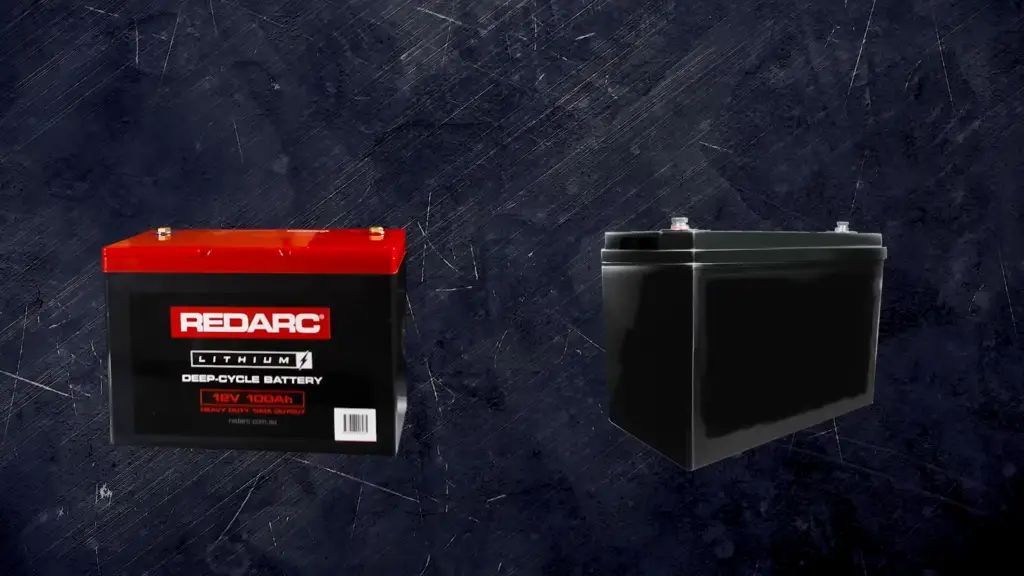
Why do household consumers need a separate battery?
Connecting household energy consumers to a car battery is not an option. First, it will quickly drain the battery, and the remaining charge may not be enough to start the engine. Secondly, starter batteries are generally not designed to operate in a cyclic or buffer mode.
When used for other purposes, car batteries quickly become unusable. Therefore, only low-power consumers of energy are allowed to connect to them. In other cases, including for autonomous power supply of equipment in a camper, you need to use a separate battery. Moreover, it should not be a starter, but a traction one – capable of long-term energy return.
Such batteries differ from starter batteries both in design and in technical characteristics:
- less sensitive to deep discharges;
- designed for intensive use in cyclic or buffer mode;
- resistant to chemical degradation;
- are capable of continuously supplying energy for the operation of any electrical equipment, instruments and devices for a long time.
Which battery to choose for a motorhome?
Self-contained power supplies of 12, 24 and 48 volts are effectively used as batteries for campers. They are portable chargers with solid capacity batteries. Such batteries are supplied in a moisture-resistant version, equipped with a built-in protection board and a charger.
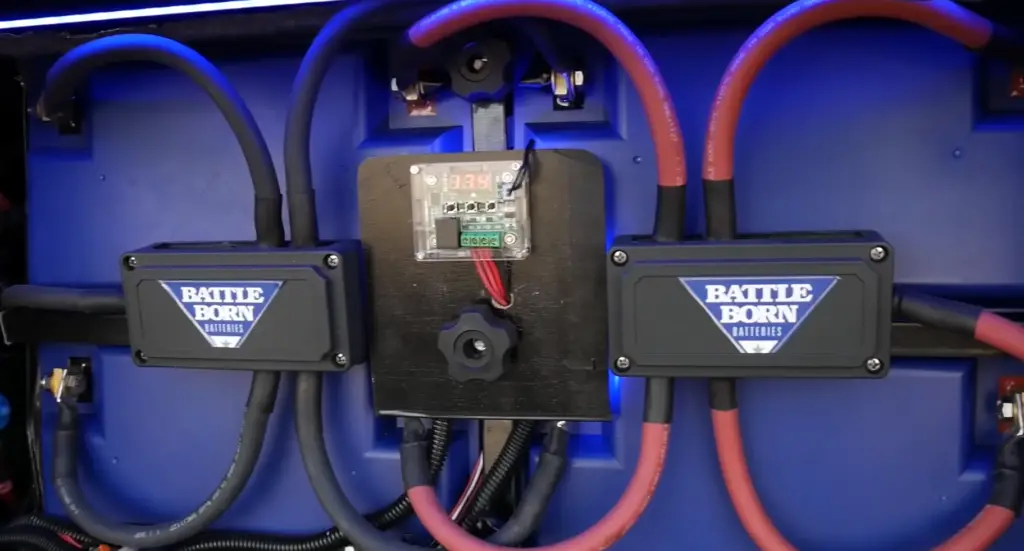
In terms of price, specific energy intensity and weight, lithium-ion type batteries, in particular lithium iron phosphate (LFP or LiFePO4), are reasonably considered the best choice. They are:
- reliable;
- quickly charged from the outlet;
- durable;
- with lightweight and compact size, they accumulate a large amount of energy;
- provide efficient power to all kinds of electrical appliances;
- do not require maintenance;
- safe to use – built-in protection board prevents overheating and other dangerous situations;
- work stably in the temperature range from -20 to +50 °С. [2]
The principle of operation of a battery for a motorhome
Lighting fixtures and other low-voltage devices in the living space of the motorhome are powered by a separate 12 V on-board power supply with a storage battery. Household appliances are connected to it through low-voltage sockets. Equipment operating from a 220 V network is connected to sockets of another network, which, through the external connector of the camper, is connected to the power supply network of a camping or other stationary object when parked.
An alternative option for powering equipment at 220 V when the motorhome is parked is the use of a fuel generator. It can be portable or built into the camper. In addition, you can get an internal network of 220 V using an inverter-converter by connecting it to an autonomous power source. This option is universal – it is used both in the process of movement and during parking.
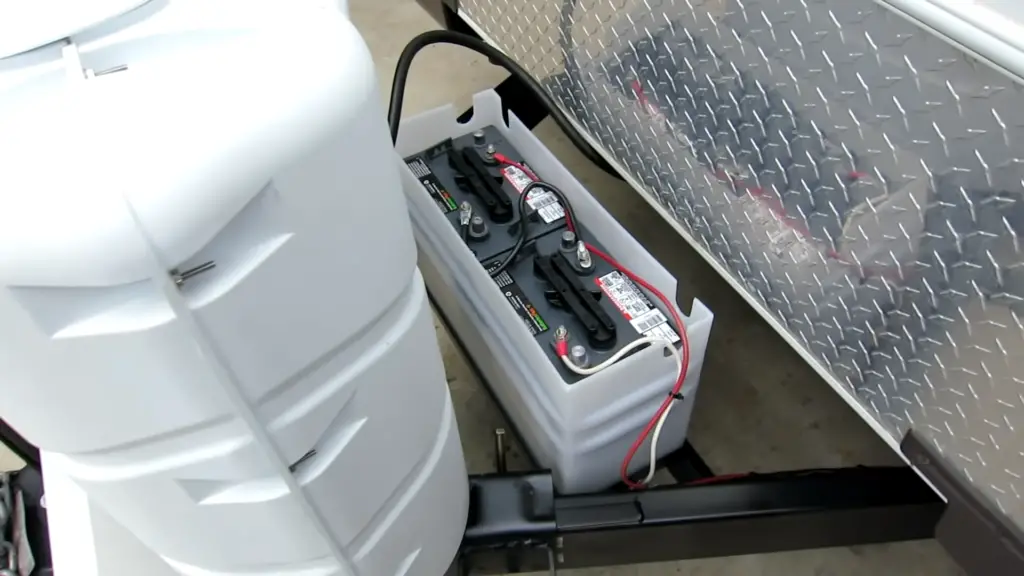
Thus, power for a motorhome can be provided by different sources:
- Rechargeable batteries, in other words – autonomous power sources.
- Fuel generator or running camper engine.
- Camping power outlet or other external power source.
Power Generation Devices for Motorhomes
In order for autonomous power sources to provide power to the devices and devices installed in the motorhome for a longer time, it is advisable to install a battery with a good capacity reserve and use electricity economically. For example, instead of low-voltage incandescent lamps, use more economical LED bulbs, strips and matrices. Instead of conventional air conditioning systems, it is worth installing an economical inverter-type air conditioner. Other appliances for a motorhome also need to be selected taking into account their efficiency.
The battery energy reserve can be replenished not only from external 220 V power grids, a fuel generator and a camper engine, but also using alternative generating sources – solar panels and compact wind generators. Their presence increases the autonomy of the motorhome and allows you to plan long trips without strict reference to campsites.
Energy calculation
As a rule, lithium batteries with a capacity of at least 100 Ah are installed in the battery compartment of the motorhome. To more accurately calculate the required battery capacity, you should take into account the power of energy consumers and their battery life on 1 battery charge.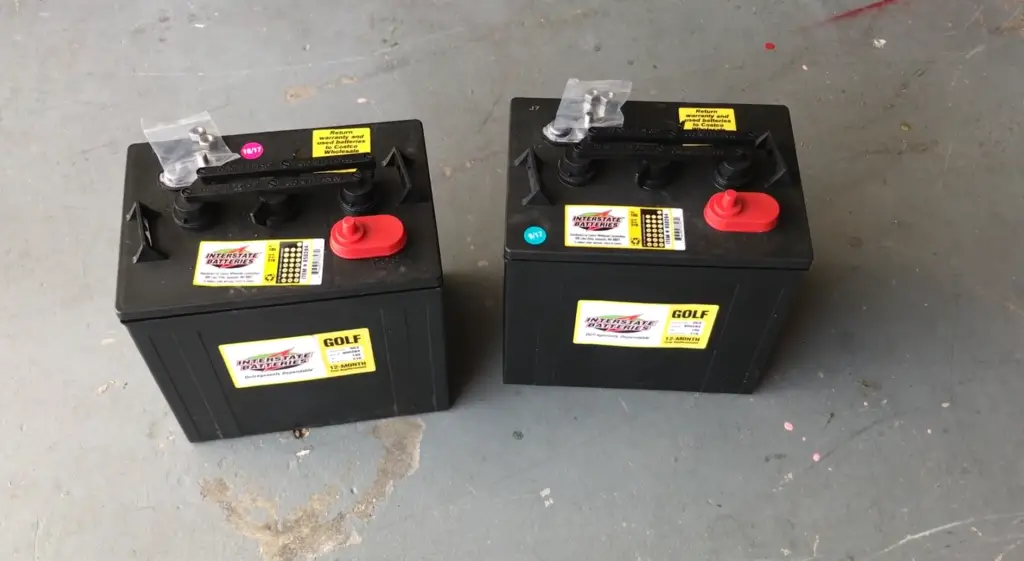
Depending on the specific equipment of the motorhome with electrical appliances and appliances, it is necessary to calculate their total need for electricity. To do this, the power consumed by the devices is multiplied by the approximate time of their daily operation, and the resulting values are summarized taking into account all the devices used. This calculates the total power consumption per day or other period between battery charges.
Different Types of Batteries
Despite the fact that outwardly the batteries seem very different, inside they are arranged approximately the same. A typical car battery is a box with six banks and electrodes in the form of plates assembled in packages (with different polarity – positive or negative), which are washed by a special liquid or gel (electrolyte). The most common are acid batteries, so named because sulfuric acid is poured inside. If we compare them with analogues, then such products have an outstanding energy intensity and can deliver more current in a short moment, which will rotate the crankshaft much more efficiently at the time of start-up. In addition to electricity, they are also a source of harmful fumes that produce sulfuric acid and lead, from which the plates are made. In order to somehow reduce the negative impact on human health and prevent leakage, the walls of the boxes are made of durable plastic that can hold sulfuric acid.
The classification of rechargeable batteries occurs mostly by the composition of the electrodes, as well as by the types of electrolyte. Lead plates can be coated with various chemicals and compounds: calcium, antimony, etc. There are eight types of car batteries in total:
- antimony,
- low antimony,
- calcium,
- hybrid,
- gel,
- AGM,
- efb,
- alkaline. [3]
Differences Between 6V and 12V Batteries
Rechargeable batteries have in their characteristics, among other things, such an indicator as the output voltage. Of course, 12-volt batteries are the most massive, but 6-volt batteries are also found in retail. What are they used for?
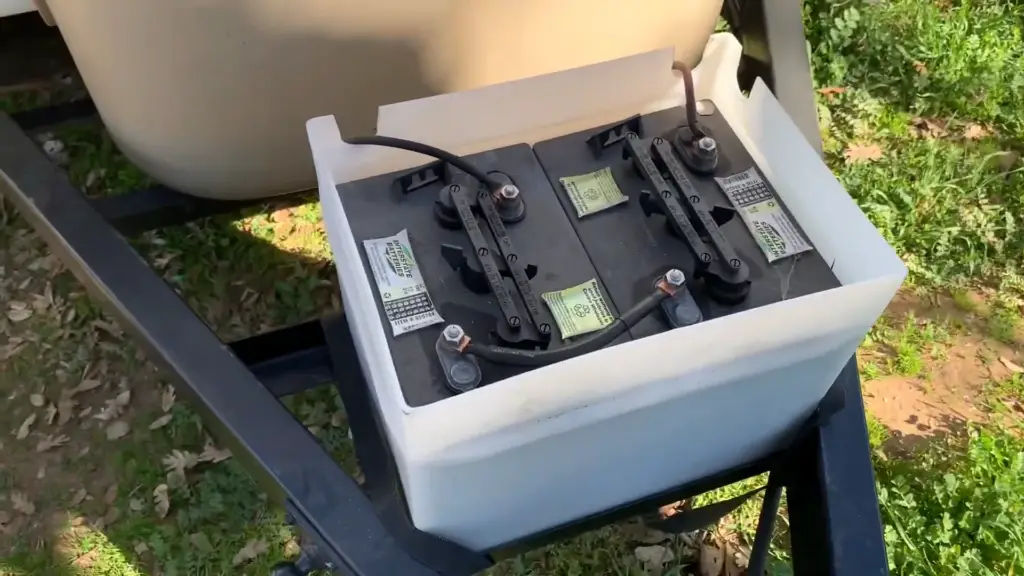
A 6-volt battery consists of three cans of 2 volts (conditionally) connected in series. Accordingly, the output is 12V. In fact, this is half a 12-volt battery. The scope of such batteries is quite limited, and they are mainly designed to increase the capacity by connecting in series and obtaining the same 12 volts at the output. [4]
12-volt or 6-volt Batteries: Which One to Choose?
Let’s look at the similarities and differences between 12-volt and 6-volt batteries now that we’ve covered the distinctions. If you’re dry camping or boondocking, a six-volt battery may be the best option. Although a sealed battery is preferable, if you don’t mind adding water to the cells, a 12-volt battery will suffice.
If you have an RV whose “house bank” is made up of multiple 12-volt batteries wired together, then six-volt batteries would be a better choice. Six-volt batteries have a capacity much higher than 12-volt batteries and can power devices for prolonged periods. They’re also less prone to discharge in a short period of time.
What Is The Best RV Battery Set-Up?
Now that we’ve covered the differences between 12-volt and six-volt batteries, let’s talk about what is the best RV battery setup. The short answer is that it depends on your needs. If you plan on dry camping or boondocking, then a six-volt battery might be a good choice. However, if you don’t mind adding water to the cells, then a 12-volt battery will probably suffice.
If you have an RV with multiple 12-volt batteries wired together in a “house bank,” then you might want to consider switching to six-volt batteries. Six-volt batteries have a higher capacity than 12-volt batteries and can provide power for longer periods of time. They’re also less likely to discharge as quickly.
How To Decide Which RV Battery Set-Up Is The Best
There are a few things you’ll want to consider before making your decision on which RV battery set-up is best for you. Here are a few key factors:
- Your RV’s power requirements
- The amount of space you have for batteries
- How often you use your RV and for how long
- If weight is a concern
- Cost
Your RV’s power requirements are going to be the biggest factor in deciding which battery set up is best for you. If you have a smaller RV, or one that doesn’t have many electrical devices, then a six volt battery may be just fine.
The amount of space you have for batteries is another important consideration.
How often you use your RV and for how long will also play a role in determining which battery set up is best for you. If you only take short trips and don’t use many electrical devices, a six volt battery may be sufficient. However, if you camp often or take longer trips, two 12-volt batteries will give you the most power and run time.
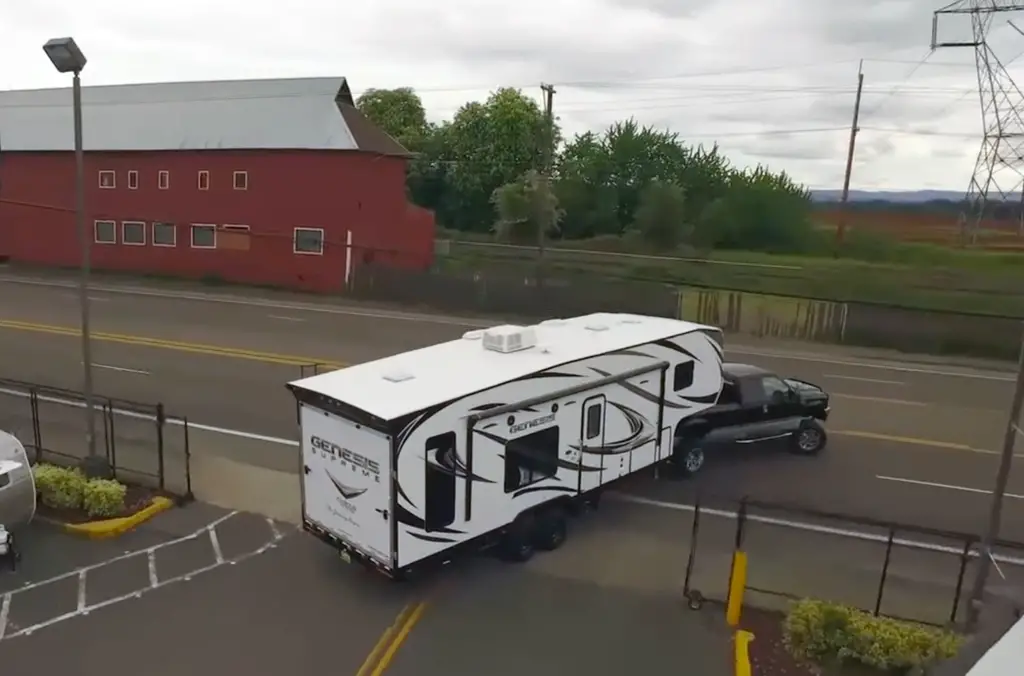
Weight is another factor to consider, especially if you have a smaller RV. Six volt batteries are much heavier than 12-volt batteries, so if weight is a concern, you’ll want to go with the lighter option.
Finally, cost is always a consideration when making any purchase. Six volt batteries are typically less expensive than 12-volt batteries, but you’ll need two of them to get the same amount of power. So, if cost is a major factor for you, six volt batteries may be the way to go.
Once you’ve considered all of these factors, you should have a good idea of which RV battery set up is best for you.
How to Connect 6v Batteries in a Series
If you’ve decided that a six volt battery setup is right for you, then you’ll need to know how to connect them in a series. This is a simple process and only requires a few supplies.
First, you’ll need two batteries of the same size and type. Next, locate the positive terminal on each battery and connect them together with a length of jumper cable. Then, do the same with the negative terminals. Finally, connect the other end of the jumper cables to your RV’s electrical system. [5]
FAQ
What if I Charge a 12V Battery With a 6V Charger?
If you charge a 12v battery with a six-volt charger, you will not damage the battery. However, the battery will only charge to 50% capacity because the voltage of the charger is too low.
You should also avoid using a higher voltage charger on a lower voltage battery. For example, if you have a 12v battery and you use a 24v charger, you could damage the battery by overcharging it. Always double check the voltage of your batteries and chargers before making any connections. [6]
Can I Use a 12V Battery Instead of a 6 Volt Batteries in an RV?
Yes, you can use a 12v battery instead of two six-volt batteries in your RV. However, you will not get the same amount of power as you would from two six-volt batteries. This is because the voltage of a single 12v battery is not as high as the voltage of two six-volt batteries connected in series.
If you decide to use a 12v battery in your RV, you may want to consider investing in a higher quality battery so that it lasts longer and provides more power. You should also make sure that your RV’s electrical system is compatible with a 12v battery before making any connections.
How Many Ways to Wire Batteries Together?
There are two ways to wire batteries together: in parallel and in series. Connecting batteries in parallel will increase the amp hours (Ah), while connecting batteries in series will increase the voltage (V). You can also combine both configurations to create a 24v system.
When deciding how to wire your batteries, you should consider what type of power you need for your RV. If you need more power to run appliances, then you should connect your batteries in series. If you need more runtime before recharging, then you should connect your batteries in parallel. You can also use a combination of both configurations to get the best of both worlds.
No matter which configuration you choose, always make sure that your batteries are compatible and that you know how to properly connect them.
Are RV House batteries 6V or 12V?
RV house batteries can be either six-volt or 12-volt. The type of battery you need will depend on the RV’s electrical system and the power requirements of your appliances.
If you have a smaller RV with fewer appliances, then a six-volt battery may be sufficient. However, if you have a larger RV or you plan to run multiple appliances at the same time, then you will need a 12v battery. You may also need a higher capacity (Ah) battery if you plan to use your RV for extended periods of time without hooking up to shore power.
When choosing an RV house battery, it is important to consider the voltage, amp hours (Ah), and size (physical dimensions) of the battery. You will also need to make sure that the battery is compatible with your RV’s electrical system.
How efficient are solar panels?
Even with a power of up to 100 watts, solar panels generate enough energy to light the living area of the camper, recharge gadgets and watch a mini-TV. More powerful panels allow you to fully use the mini-refrigerator, air conditioner, coffee machine and other appliances.
Placed on the roof of the motorhome, solar modules help keep the onboard batteries at a high charge level. They are especially effective when traveling in spring and summer, during the period of maximum solar activity. As a result, it is possible to use an external fuel generator less often or even do without it. [7]
Can I use wind turbines?
In addition to solar panels, compact and lightweight wind generators with a power of several hundred watts are used to replenish the battery’s energy reserve. They deliver rated power even at low wind speeds.
Such solutions are especially relevant when traveling in places with good wind potential, including when traveling in autumn and winter. To install wind turbines on a motorhome, retractable or folding masts of a reliable design are used.
Useful Video: 6v vs 12v BATTERIES FOR YOUR RV | BUDGET RV BATTERY UPGRADE
Conclusion
So, which RV battery should you choose for your rig? The answer largely depends on how you plan to use your vehicle. If you’re just using it for weekend getaways, a 6-volt battery will do the trick. But if you’re full timing or using your RV for extended periods, you’ll want to go with a 12-volt battery. Keep in mind that both types have their pros and cons, so make sure to do your research before making a purchase. Thanks for reading!
References
- https://thegapdecaders.com/motorhome-electrics/
- https://ecotreelithium.co.uk/news/how-to-choose-leisure-battery-size/
- https://en.wikipedia.org/wiki/List_of_battery_types
- https://www.takomabattery.com/comparison-study-of-6v-vs-12v-battery/
- https://www.etrailer.com/question-60431.html
- https://forums.redflagdeals.com/charging-12v-battery-6v-charger-453667/
- https://gpelectric.com/rv-solar-a-complete-guide/


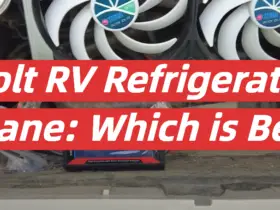
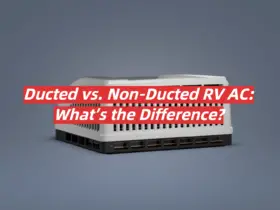
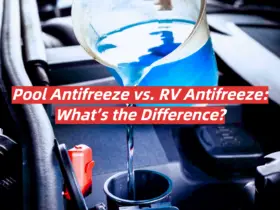
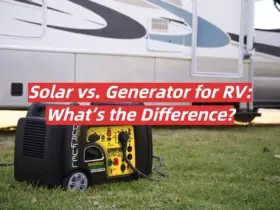
Leave a Reply